Cracked: The worst kind of damage that a glass can sustain is a crack. Not only are cracks ugly, they tend to get worse with handling. As a collecting colleague likes to say, such glasses should be taken out into the back yard and put on the fence post. There are exceptions - a crack in the base of an otherwise mint glass can be hidden and the damage tends to be stable. I have at least one such glass on display in my own collection.
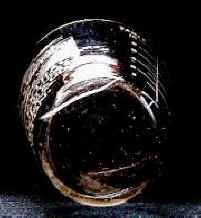
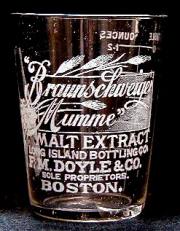
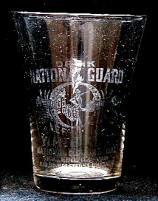
Faded: The other kind of damage that strips the value from a glass is wear to a label. With repeated handling and washing, labels get thinner and thinner and eventually fade to the point where they can still be seen when held up to the light but they vanish when the glass is put on display. If you live in a glass-poor region of the country, it's tempting to buy whatever comes your way, even if badly faded. It's probably better to resist the urge, however, because you're always going regret having bought it and it may well put an end to your desire to collect pre-pro glasses.
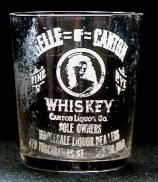
Scuffed: Glasses that have been mistreated by being thrown in a drawer with other odds and ends, or that have been tossed into a box of junk do not suffer the insult gladly. Their labels become scratched and scuffed. Light and localized scuffing is tolerated as an almost inevitable consequence of profound age, but glasses with badly damaged labels are almost as worthless as those with a faded one.

Purpled: Glass manufactured prior to 1917 contained manganese, which was added to neutralize the colors produced by impurities. The result was a very clear and pristine glass. Unfortunately, prolonged exposure to UV rays (i.e. sunlight) causes manganese to oxidize and take on an amethyst color. Thus, one common way of displaying glasses is to sit them in a window ledge but after they've been basking for ten or twenty years they gradually assume a purple hue. The intensity of the purpling is related to the amount of manganese in the glass and the extent of UV exposure, and one can encounter glasses with just a hint of color and some that are the color of grape juice. Bottle collectors generally treasure amethyst 'desert glass' but shot-glass collectors have mixed feelings. While the purple tint makes a glass more interesting, it also makes the label less distinct.
Bottom line is that a hint of amethyst is good, whereas a deep purple hue is not.
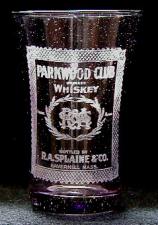
Rim damage: Pre-pro glasses are made of such thin glass that damage to their exposed rims is almost inevitable. Such damage can range from mild to severe and the continuum is commonly described in terms of "rim roughness", "nicked", "flea bitten", "dinged", "bruised", "flaked" or "pieces missing from the rim". The latter description is usually a sign of trouble. "Rim roughness" is usually negligible damage, "dinged" may have more serious connotations, a "bruise" describes a half moon of internal damage to the glass caused by impact with a sharp object, and may ultimately lead to a flake.
Most of this damage can be removed by grinding the rim down by a few fractions of an inch, followed by polishing. This should be left to the hands of someone who is skilled in glass work. While such repairs are common and tolerated in some areas of the collecting community, it's dishonest to bill such glasses as being mint. They're not and they shouldn't command the price of a pristine glass
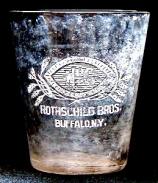
Sick: Glass is such a hard, resilient material that it comes as a surprise to some that it's actually a delicate crystal lattice with various additives and impurities trapped in the mesh. This lattice can erode and the contents leach out. Such damage is most commonly seen in bottles that have been buried for prolonged periods, during which time the glass has been modified by the materials with which it has been in contact. Shot glasses can show a similar pattern of damage. On first sight, they may simply appear dirty but then mild soap and water treatment fails to have any affect. Some of these glasses actually contain stubborn mineral deposits and can be cleaned using more specialist methods (see cleaning and care), but others resist any attempt to be restored. Unfortunately, putting such glasses under a microscope reveals them to be covered in a myriad of minute depressions - erosions - that catch the light and give rise to the cloudy appearance of the glass. This kind of damage is not reversible, although it can be masked by a applying a thin coating of mineral oil or similar substance.